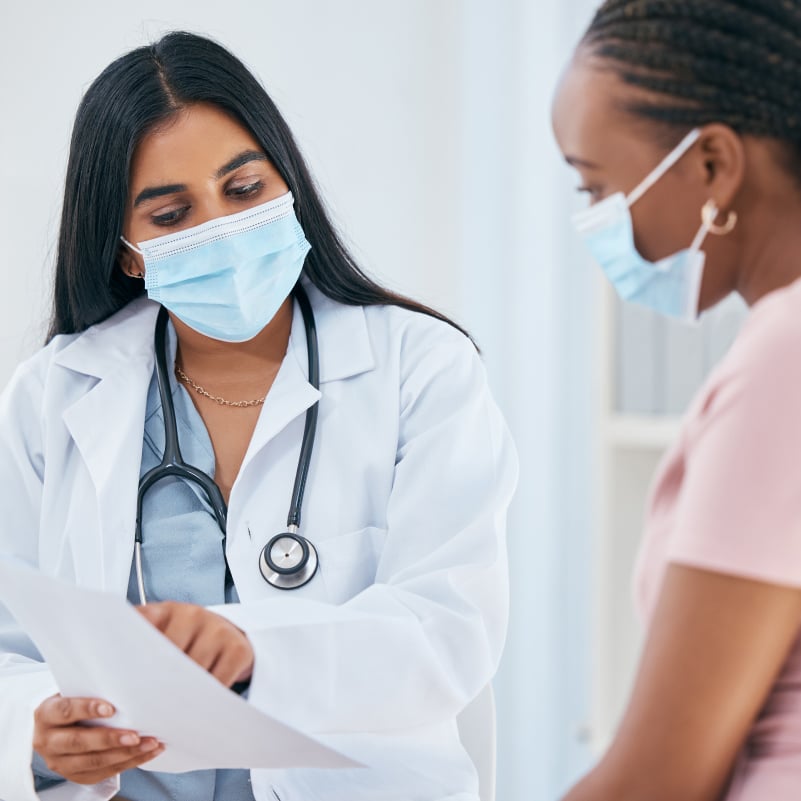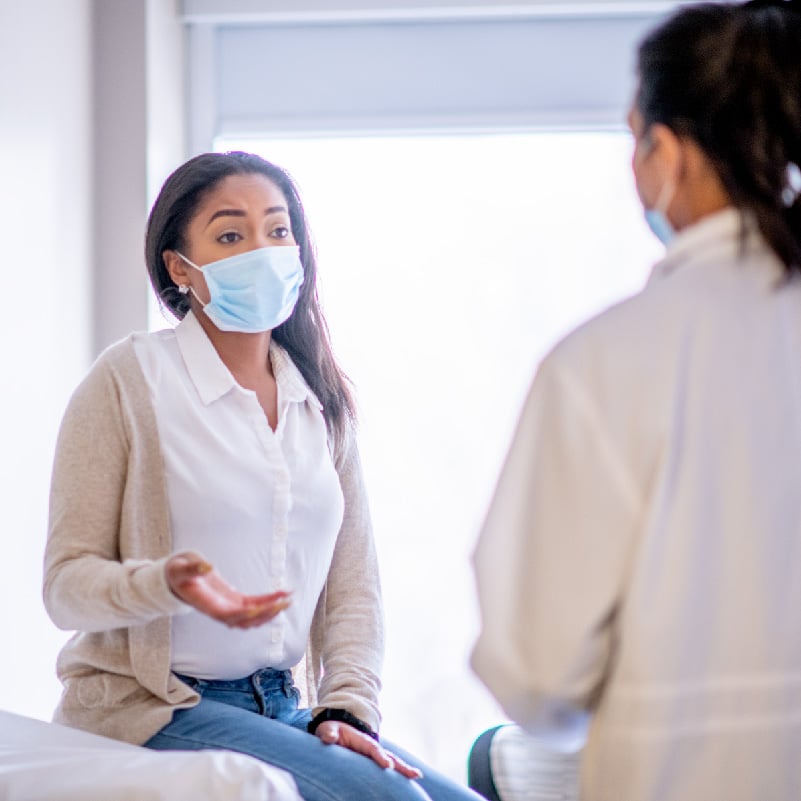When women are screened for breast cancer in a mammogram, there are some factors that may influence how a radiologist reads the results of their exam. One of those factors is breast density.
Kenneth Van Sickel, MD, is a diagnostic radiologist, and Kelly Krupa, MD, is a breast surgical oncologist at Rochester Regional Health’s Breast Center. They share their knowledge of what patients should know about breast density and how it can affect mammograms and a patient’s risk for breast cancer.
What is breast density?
There are three types of breast tissue: glandular tissue, fibrous or connective tissue, and fatty tissue. Breast density refers to the amount of these types of breast tissue as seen on a mammogram.
If a woman’s breast is made up of more glandular and fibrous tissue than fatty tissue, the breast is classified as dense.
The American College of Radiology classifies breast density on a scale from A-D as part of the Breast Imaging Reporting and Data System (BI-RADS). The categories are as follows:
- A: Almost entirely fatty (nearly all breast tissue is non-dense)
- B: Scattered areas of fibroglandular density (majority of breast tissue is non-dense)
- C: Heterogeneously dense (majority of breast tissue is dense)
- D: Extremely dense (nearly all breast tissue is dense)
Women usually learn if they have dense breasts at their first mammogram. It is not something that can be felt with a clinic or self-breast exam.
Updated mammography regulations published recently by the FDA will require facilities to provide information to patients about the density of their breasts.
“When a patient is categorized as having dense breasts, that is considered normal,” Dr. Van Sickel said. “Roughly half of all women have breasts that are either heterogeneously dense or extremely dense.”
Why breast density matters
When glandular and fibrous tissue (dense breast tissue) shows up on a mammogram, it appears white and is hard to see through. Therefore, the more white that appears in a mammogram image, the denser the breast will be to a radiologist – and more difficult to read or interpret on the mammogram.
Because breast cancer also displays white on mammograms, having dense breasts can make it more difficult to detect breast cancer on the image(s).
Thankfully, there are newer breast imaging technologies, such as 3D mammography (digital breast tomosynthesis) that allow for a more thorough exam of dense breast tissue. 3D mammograms use X-rays to create a series of images from several angles, then reconstructs the images in a computer to create a 3D image of the breast and give radiologists a more complete picture.
Rochester Regional Health Imaging Centers offer 3D mammograms at all breast imaging locations, including the Mobile Mammography Center.
Supplemental testing
Most breast cancers can be seen on a mammogram – even in women who have dense breast tissue, so it’s still important to get regular mammograms. However, screening strategies should also take into account a woman’s personal risk factors for breast cancer.
“If a woman knows she has dense breasts from prior imaging and her doctor determines she is higher risk, they may recommend additional screening,” Dr. Krupa said.
These supplemental screening technologies may include a breast ultrasound, which uses high-energy sound waves to form a more robust image of the breast tissue, or breast magnetic resonance imaging (MRI), which uses a powerful magnet and radio waves to create a picture of different areas of the body.
Each of these supplemental methods of breast cancer screening are used in addition to a mammogram – not as a replacement – and require a provider referral.
“For patients at Rochester Regional Health who have been recommended for supplemental screening exams based on their personal or family history, we try to coordinate them at the same appointment as their mammogram so it is more convenient for them,” Dr. Van Sickel said.
Knowing the risk factors
Women with dense breasts have a 1.5 times greater risk of developing breast cancer on average compared to a woman with non-dense breasts, according to the American College of Radiology. For some women, this risk may be even higher when factoring in their personal and family medical history.
There are certain things that will increase the likelihood of a woman having dense breasts, which may include:
- Age – dense breast tissue is more common in younger women
- Genetics – women who are Hispanic or Black, or have a family history of dense breasts
- Body Mass Index (BMI) – lower BMI or lower body fat is commonly linked to denser breasts
- Use of hormone replacement therapy
“We offer a high-risk program at the Rochester Regional Health Breast Center,” Dr. Krupa said. “If patients are assessed and determined to be high risk for breast cancer, our providers will help to manage imaging and any potential genetics testing, and also coordinate any care for biopsies or surgeries that may occur.”








